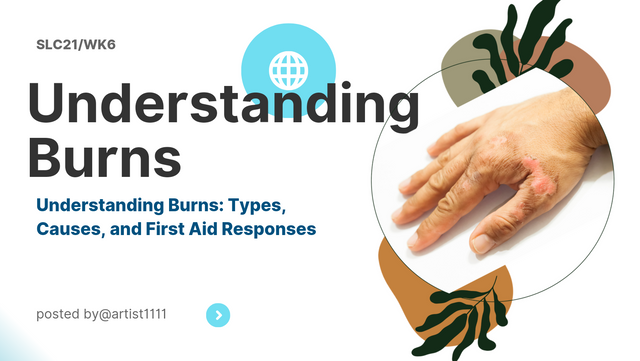
Canvas source You witness a child accidentally spilling hot tea on their arm. What immediate steps will you take? What actions will you avoid?Include considerations for burn severity and explain your reasoning |
|---|
First things first, i will don't panic! Kids feed off your energy, so take a deep breath and keep calm. The goal is to act quickly but stay cool—literally and emotionally.
Move the child away from the hot tea. The tea is not going to apologize, so do not wait around! Remove any remaining hot liquid from the child. If clothing is soaked, remove it gently and I mean very gently. Do not pull clothing away from the skin if it is stuck.
Now, let's cool down – the burn, that is. Run cool (not ice-cold!) water over the burned arm for at least 10 minutes. This will help to halt the burning and bring some welcome relief. Think of it as giving the burn a mini-vacation.
While cooling the arm, keep chatting with the child. Say silly things, tell a joke, or ask them about their favorite cartoon. Distract, distract, distract! The goal is to make them forget the sting while you’re busy being a first aid hero.
Check for blisters or swelling. If blisters start to appear, leave them alone — no popping! Blisters are like nature’s little bandages, and messing with them invites unwanted infections to the party.
Finally, pat dry the arm and gently apply a non-stick dressing. Give the child some water to sip on, and maybe a high-five for being so brave. Oh, and remember — hot tea belongs in cups, not on kids!
What actions will you avoid?
First off, avoid using ice or super cold water on the burn. It might seem like a good idea, but it can actually make things worse by damaging the skin even more. Cool, not freezing!
Don’t apply any butter, toothpaste, oil, or random home remedies. The burn is not a piece of toast! These can trap heat & increase the risk of infection.
Avoid peeling off any clothing that’s stuck to the burn. You’re not a magician — no sudden moves here! Gently cut around the fabric & leave what’s stuck to avoid more damage.
Do not pop any blisters. It might be tempting, but those bubbles are protective shields. Popping them invites germs, and no one wants an infection as a guest.
Skip rubbing or pressing on the burned area. The skin’s already been through enough — a gentle touch is all that is needed.
Lastly, do not ignore signs of serious burns like deep wounds, swelling, or excessive pain. If it looks bad, seek medical help ASAP! Better safe than sorry.
Include considerations for burn severity and explain your reasoning
First-degree burn
This is the mildest sort of burn. It would only touch the outer surface of your skin, thereby making you feel red and painful and mildly swollen. Imagine this like a sunburn, where it doesn't endanger your life; it just gives you a certain amount of pain and discomfort. You could manage a first-degree burn from home by rinsing it under running cold water and using some aloe vera gel. It's a burn, but it's not the end of the world!
Second-degree burn
This burn goes deeper, affecting both the outer layer (epidermis) and the layer beneath it (dermis). You’ll notice blisters and a lot more pain. It might also cause some swelling. Treating second-degree burns requires cooling the area, avoiding popping blisters, and applying a clean, non-stick bandage. In severe cases, it’s best to seek medical care to prevent infection.
Third-degree burn
It means all layers of the skin will be affected and also damages the nerves and some of the tissues under them. The skin might seem charred or white in colour and the person might be numb, not feeling a thing as the nerves get destroyed. Seek for medical care immediately. DO NOT WAIT! Summon an ambulance or get other help at once. THIRD-Degree Burns Never try home care treatment-see a specialist or an ER doctor.
Reasoning:
The severity of the burn determines the level of care required. First-degree burns are manageable with at-home care, while second-degree burns might need medical attention depending on their size and location. Third-degree burns are medical emergencies, and immediate intervention is crucial to prevent severe damage or infection. Always be aware of the severity and don’t hesitate to get professional help when in doubt! **Your skin deserves the best care, and sometimes that means calling in the experts.
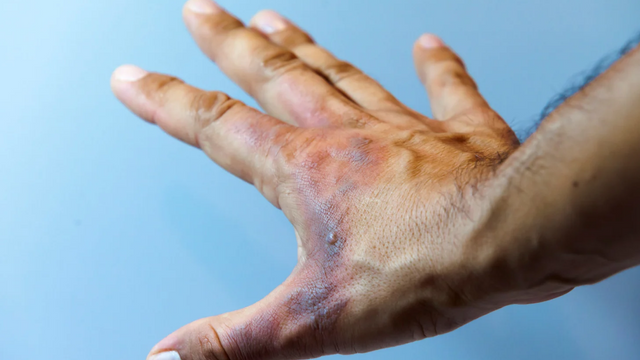 Canvas gallery Canvas gallery |
|---|
Q2: "A worker in a warehouse suffers an electrical burn after touching exposed live wires. The burn site shows entrance and exit points, with damage to the skin and underlying tissues. |
|---|
A warehouse worker receives an unpleasant shock after touching some live wires that are not covered. Yikes! Electrical burns are not to be taken lightly; they can cause quite a lot of damage. The entrance point of the burn is where the electricity enters the body, and the exit point is where it leaves. Imagine it as a path that the electricity travels, and it's no picnic for the skin and tissues!
First, you’ll notice damage to the skin at both the entry and exit points. The skin may look blackened or charred, which is a sign that the electricity caused serious heat damage. It’s like the skin went through a mini BBQ session, but not in a fun way!
The electrical current can also damage the underlying tissues, like muscles and nerves. Damage can cause swelling, pain, and even loss of function in the affected area. **It's no small matter!
The first thing to do is to disconnect the power. Make sure you’re not touching the person while they’re still in contact with the wires. Safety first! After cutting off the power, it’s important to assess the burn. Don’t try to treat deep electrical burns at home – it’s time to call in the pros!
Cool the burn with water or a clean cloth, but avoid using ice directly on the burn site. We don’t want to freeze anything while we’re trying to heal! For electrical burns, it's especially important to seek immediate medical help. These burns often cause hidden damage that needs professional treatment.
Electrical Burns. Remember, electrical burns are serious business! They can cause permanent damage, so don't sit around. Get help in a hurry and keep it cool. Your skin and health deserve top-notch care!
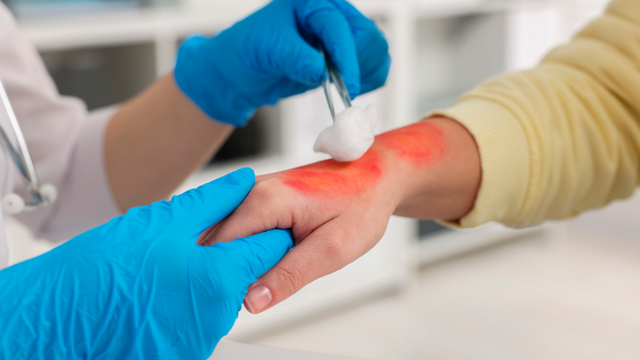 Canvas Gallery Canvas Gallery |
|---|
What are the immediate first aid actions you should take, and what critical steps should you avoid?
If one suffers a burn, particularly electrical, one needs to act fast and properly in order not to aggravate the injury. Electrical burns may appear minor on the skin but can be really severe in the tissues underneath. Thus, immediate first aid becomes an important step in limiting damage and facilitating recovery. Here is what you should do—and most importantly, what you should avoid.
Immediate First Aid Actions:
Ensure safety first: Turn off the power source if it's safe to do so. Do not touch the victim if they are still in contact with the live wire to avoid becoming a victim yourself.
Call for medical help: Dial emergency services immediately. Even if the burn seems minor, electrical burns often cause internal damage that requires professional evaluation.
Examine the burn: Identify the entry and exit points of the electrical burn. There may be charring or burning at the entry and exit points of the electrical burn, so this is important to notice.
Cool the burn: Cool the area with running cool tap water. Let the area run under cool tap water for at least 10-20 minutes. This removes heat from the area and slows the burn.
Cover the burn: Use a sterile, non-stick bandage or a clean cloth to cover the burn. This helps protect the area from infection and reduces the risk of further injury.
Monitor breathing and heart rate: If the person is unconscious or having difficulty breathing, start CPR immediately, if trained, and keep them in a stable position.
Critical Steps to Avoid:
- Do not pull off clothing stuck to the burn. This can further damage the skin. Instead, cover the area with a clean cloth.
- Do not use ice or very cold water. This can cause frostbite or exacerbate the injury. Electrical burns
- Do not apply ointments or creams unless recommended by a doctor. This can trap heat in the skin.
- Do not delay medical treatment or assume it is not serious. Electrical burns can have hidden internal damage, and professional care is required.
- Do not touch the burn area more than necessary as this may lead to infection or further injury.
Acting quickly, calmly, and correctly in the case of an electrical burn is important to minimize complications and promote recovery. Always remember that getting the right medical attention is the most important step!
How does this differ from treating thermal burns?
Thermal burns, which are caused by heat such as fire or hot objects, and electrical burns, which are caused by electricity, require different first aid approaches. Although both burns can damage the skin and tissues, electrical burns often cause deeper damage that may not be visible on the surface.
Let's look at the key differences in treating these two types of burns:
| Aspect | Thermal Burns | Electrical Burns |
|---|---|---|
| Cause of Injury | Caused by heat, such as flames, hot surfaces, or steam. | Caused by electricity from live wires or electrical equipment. |
| Damage Type | Primarily affects the skin's surface. Can cause blisters, redness, or charring. | Affects both the skin and deeper tissues, potentially leading to internal injuries and organ damage. |
| Burn Severity | Can be first, second, or third-degree burns, depending on heat intensity and exposure time. | Can cause entry and exit points, with severe damage beneath the skin. Often leads to muscle, nerve, and bone damage. |
| First Aid Action | Cool the burn with cold water (not ice), cover with sterile bandages, and avoid ointments. | Turn off power, cool the burn area, and cover with a sterile bandage, but never remove clothing stuck to the burn. |
| Risk of Internal Damage | Usually localized to the skin with minimal internal injury. | Can cause deep internal damage even if the surface burn looks minor. |
| Emergency Care Needed | Usually requires medical attention if severe but often can be treated at home with proper care. | Immediate medical attention is crucial due to potential internal injuries and complications. |
Both types of burns require immediate attention, but electrical burns are often more dangerous due to the possibility of hidden damage. Timely, proper first aid for both can significantly affect recovery.
"A worker in a factory accidentally spills a strong acid on their arm, causing immediate pain, redness, and blistering. A colleague tries to wash it off with water but notices the burn spreading." |
|---|
a. Identify the type of burn.
This type of burn is a chemical burn. This happens when there is contact between a dangerous chemical, such as strong acid, and the skin, which results in pain and redness immediately along with blisters.
The damage on the tissue can be done through the reaction between the acid and the skin; thus, this situation requires great care.
The burn is brought about by the chemical property of the acid and not through heat or electricity.
What went wrong during the initial first aid?
During the initial first aid, the colleague committed the mistake of trying to dilute the acid by using water for the same. Although water can be used for thermal burns, using it for chemical burns can prove counterproductive, especially for acid burns. Sometimes in acid burns, water helps in spreading the chemical involved or creates a chemical reaction that increases the damage, depending on the type of acid in question. This would have possibly led to the spread of the burn or its intensification, as was seen in this case.
In chemical burns, the first action should always be to remove the source of the burn, if possible. This may include removal of clothing contaminated with the acid or neutralizing the chemical with an appropriate solution, depending on the type of acid involved. If the acid is unknown, it is still common to rinse the affected area with large amounts of water, but this must be done in a careful manner so that the chemical does not spread. However, without proper knowledge of the substance involved, water alone should not be used as the first line of defense.
The first error was to focus on water without considering whether it was appropriate for the specific chemical involved. Furthermore, the colleague did not seek medical attention immediately, which is a critical step in treating chemical burns. Early intervention by a healthcare professional is necessary to properly assess the burn's severity and determine the correct treatment to prevent further harm or complications.
Propose the correct first aid steps and explain why each step is important.
Remove the source: Remove the acid or chemical. If possible, remove clothing and other items contaminated with chemical immediately to prevent it from spreading the chemical. The quicker you can do this, the lesser damage it will cause.
Rinse with Water: Wash the affected area under a gentle stream of water for at least 10-20 minutes. This helps to dilute and wash away the acid, preventing further damage to the skin. But, don’t just splash water around — aim it at the burn!
Don't Use Water If It's a Powder: If it is in powder form, like some acids, don't rinse with water yet. Just brush it off gently since water could make the burn worse by reacting with the powder.
Don't touch the area at all: It might feel great to rub it or look and see how bad it really is, but this will aggravate the burn or push more of the acid into the skin.
Dress with a Clean Cloth: Once the area is washed, cover the burn with a clean, non-stick dressing or cloth. This keeps the area clean and protected from infection.
Get Medical Attention Right Away: Chemical burns need professional attention. Even if the burn is not severe, call for medical attention immediately. The doctors have to assess the condition and ensure that no further complications arise.
Stay Calm and Reassure: Lastly, keep calm and reassure the person. Burns are painful, but your steady and confident action will help them stay calm too, and that's half the battle!
Q4: You are a first responder in a rural area. Two people are injured in a house fire: Person A has a large area of third-degree burns but is conscious and calm. Person B has second-degree burns on both legs and is in severe pain. You can only help one person immediately due to resource constraints. Whom do you prioritize, and why? Support your decision with medical and ethical reasoning. |
|---|
As a first responder in a rural area with limited resources, you need to decide whom to give priority to. Person A has severe third-degree burns but is conscious and not panicking. Person B has second-degree burns on both legs and is suffering from a great deal of pain. This is how I would approach the case.
First, third-degree burns are worse than second-degree burns. All layers of the skin are affected and can damage tissues beneath, including muscles and bones. Even though Person A is calm, the burn area could lead to complications such as shock, infection, or even organ failure.
However, Person B's second-degree burns, though highly painful, do not pose such an immediate life threat. Pain is extreme, but proper treatment makes it more bearable compared to the danger of a third-degree burn. Priority with them would be to reduce pain, prevent infections, and monitor for complications.
Third-degree burns are such a critical case, so I would attend to Person A first. Why? Medical reasoning: this burn could easily turn fatal if not addressed promptly; I need to stabilize that person before it is too late. Ethically, it is a case of saving the most life-threatening condition first-sometimes that means doing the toughest choices.
After stabilizing Person A, I’d immediately turn my attention to Person B. Second-degree burns require pain management and wound care but are less likely to result in immediate death. It's all about balancing long-term survival over immediate relief.
Lastly, Doctor @huzaifanaveed1, if I were to ask you the same question, how would you respond? I’m really curious to know your medical and ethical approach! 😊
Create an infographic on burn management. Include the following:a. Types of Burns and Their Causes (Electrical, Thermal, etc)b. Different types of burns (1st, 2nd, and 3rd degree)c. First aid steps for minor and major burns d. What NOT to Do During Burn First Aid." Use visuals and short explanations for each point. |
|---|
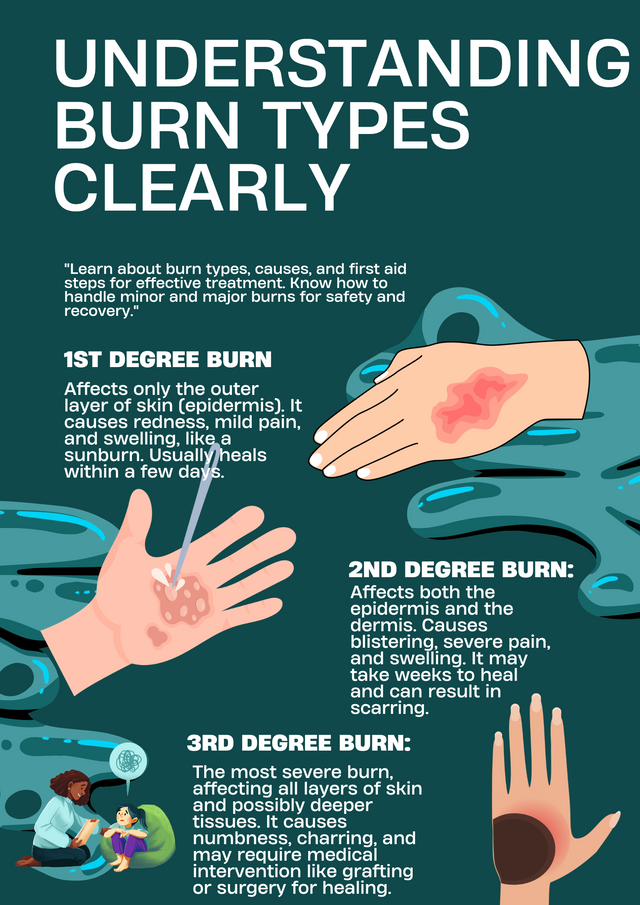 |
|---|
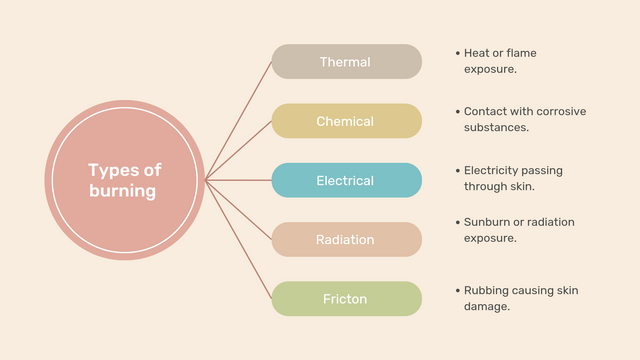 |
|---|
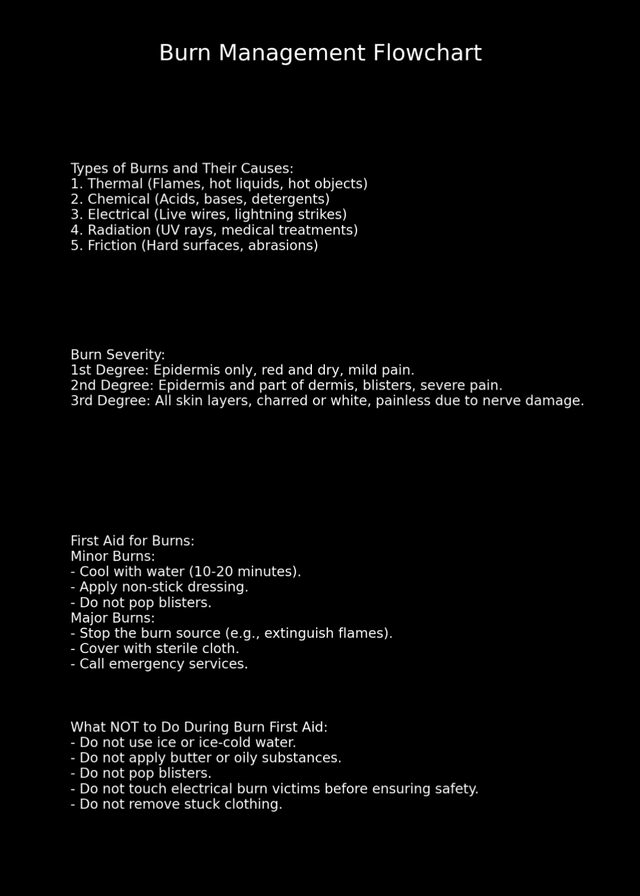 Flow Chart Flow Chart |
|---|
kind Regards
@artist1111

Adieu, folks!
May the winds of fortune
carry you to greatness!
May the winds of fortune
carry you to greatness!